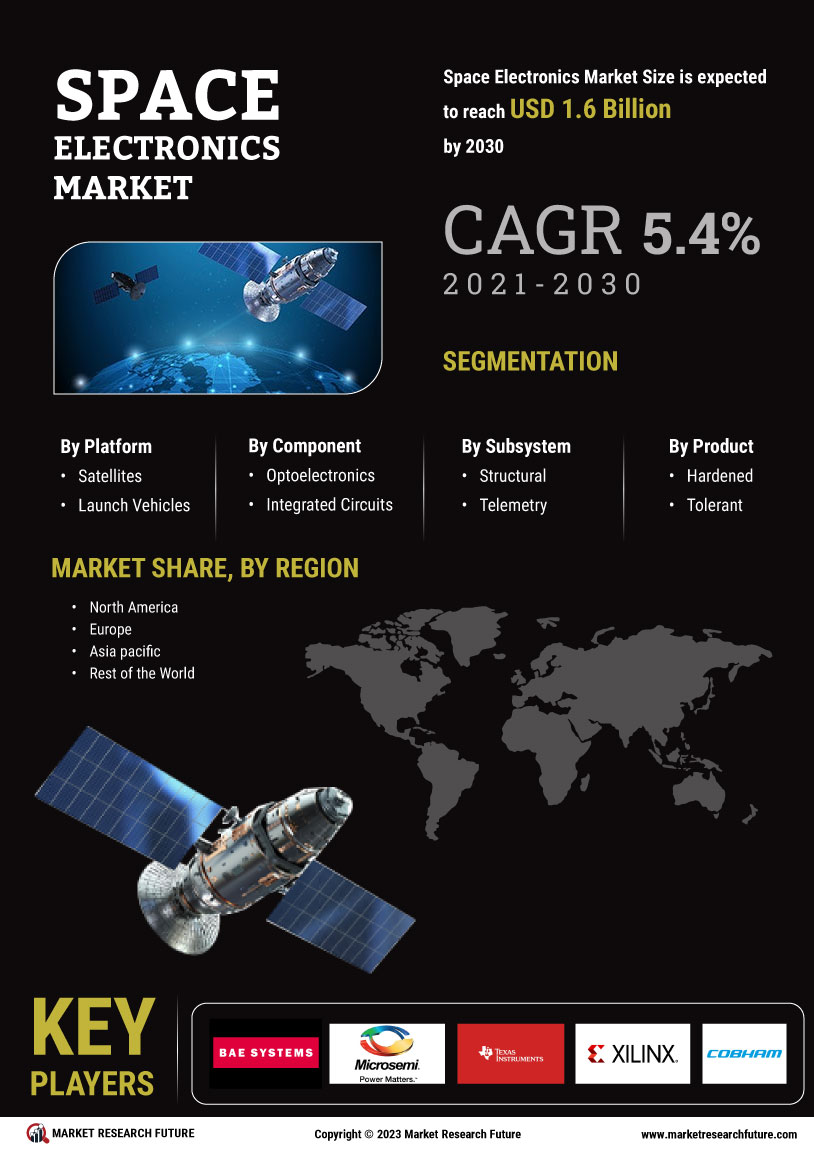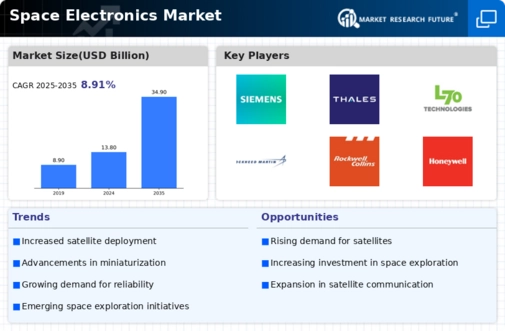The Space Electronics Market has witnessed substantial growth in recent years, driven by the increasing demand for advanced space exploration and satellite technologies. As nations and private entities invest heavily in space programs, competition has intensified among key players in the market, leading to innovations in electronics tailored specifically for space applications.
This competitive landscape is characterized by a blend of established aerospace giants and emerging technology firms that focus on developing cutting-edge solutions. The need for reliability, efficiency, and miniaturization in space electronics is paramount, as these components are critical for a wide array of functions, including communication, navigation, and data processing in extreme environments.
Consequently, the market is driven by technological advancements and stringent regulatory requirements, shaping the strategies of companies as they strive to capitalize on opportunities within the space domain.
Airbus stands out in the Space Electronics Market for its comprehensive capabilities in designing and manufacturing state-of-the-art electronic components that cater to both commercial and governmental space missions.
The company's strong engineering expertise and innovative approach enable it to deliver high-performance satellite electronics, which are essential for effective communication, remote sensing, and scientific observation. Airbus has successfully established a significant presence in the market by leveraging its robust supply chain and partnerships with research organizations and governmental agencies.
Its commitment to research and development has led to the ability to produce miniaturized electronics that consistently perform under the harsh conditions of space, thereby solidifying its reputation as a reliable provider of aerospace electronics. Additionally, Airbus's broad portfolio ranges from satellite systems to launch vehicles, providing it with a competitive edge over others in the industry.
Siemens, while primarily known for its industrial applications, has made notable strides in the Space Electronics Market by applying its advanced technology and engineering expertise to space-related projects. The company focuses on integrating digital solutions and automation systems into space electronics, allowing for improved operational efficiency and enhanced data management.
Siemens capitalizes on its prowess in sectors such as automation, cybersecurity, and IoT to merge these capabilities with traditional space electronics. This interdisciplinary approach positions Siemens as a competitive player in the market, as it can offer comprehensive solutions that address the unique challenges of space technology.
The company emphasizes innovation and robustness in its electronic systems, which support a wide range of applications from satellite monitoring to deep space exploration, thereby further enhancing its market presence and relevance in the ongoing evolution of space electronics.


















Leave a Comment